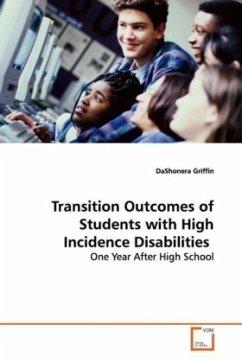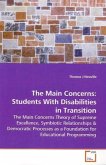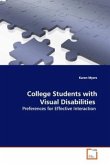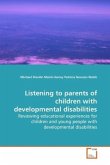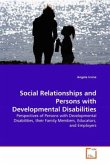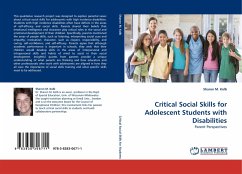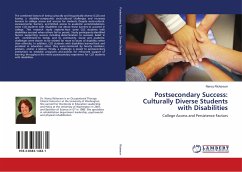This book examined factors associated with the
engagement of students with high incidence
disabilities from rural and nonrural school systems.
The investigation was conducted using 119 students
with disabilities who exited from high school during
the 2003-2004. The hypotheses were examined with
regard to whether there was a statistically
significant difference between engagement,
satisfaction with life now and perception of
preparedness of school programs and services of
students with high incidence disabilities by primary
disability, exit option and school type, as reported
to the Tracking System, Post School Transition
Survey. Specifically, the majority of former students
with disabilities were engaged in employment,
technical school, 2- year and 4- year colleges one
year after high school completion. Students in rural
and nonrural school systems appear to be equally
engaged. The differences that were noted occurred due
to primary disability, an area which historically has
yielded differences in the type of engagement or lack
thereof in students with high incidence disabilities.
Conclusions, limitations and recommendations for
further research are presented.
engagement of students with high incidence
disabilities from rural and nonrural school systems.
The investigation was conducted using 119 students
with disabilities who exited from high school during
the 2003-2004. The hypotheses were examined with
regard to whether there was a statistically
significant difference between engagement,
satisfaction with life now and perception of
preparedness of school programs and services of
students with high incidence disabilities by primary
disability, exit option and school type, as reported
to the Tracking System, Post School Transition
Survey. Specifically, the majority of former students
with disabilities were engaged in employment,
technical school, 2- year and 4- year colleges one
year after high school completion. Students in rural
and nonrural school systems appear to be equally
engaged. The differences that were noted occurred due
to primary disability, an area which historically has
yielded differences in the type of engagement or lack
thereof in students with high incidence disabilities.
Conclusions, limitations and recommendations for
further research are presented.

